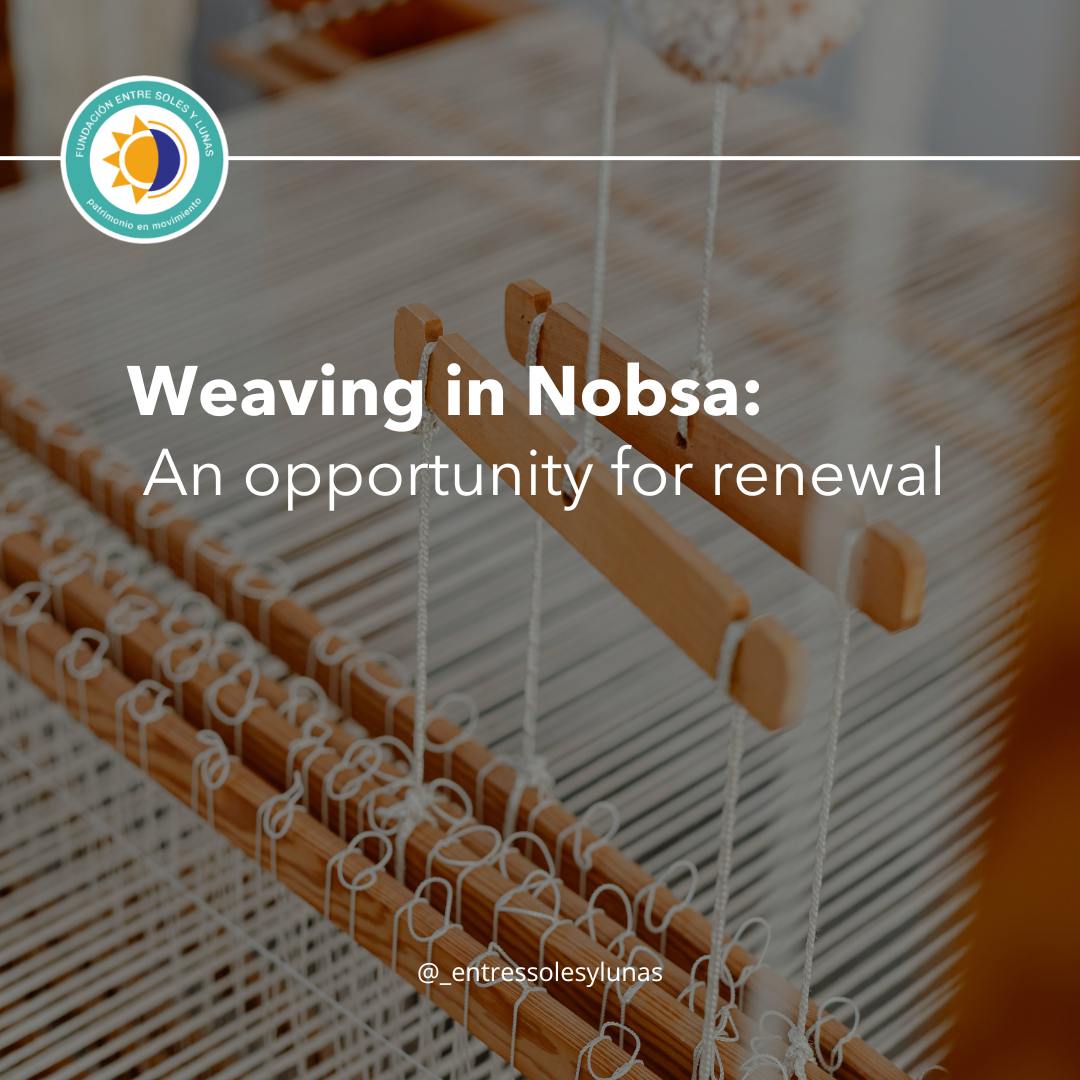Weaving in Nobsa is the legacy of pre-Hispanic indigenous communities, such as Muisca. This traditional activity is currently preserved and has earned the town the title of world capital of the ruana. The weaving system in Nobsa has multiple stories, challenges, and opportunities to explore and analyze, a task that has been done by researchers Emma Salamanca and Paloma Sandoval.

Nobsa is a town located in the state of Boyacá, approximately two and a half hours away from the Colombian capital, Bogotá. Two main economic activities are found in this town: weaving and mining. The first one is a long-standing activity due to its pre-Hispanic origins, and it is made from sheep wool. The processing of this material includes animal care, shearing, cleaning, spinning, loom weaving, and marketing. The town currently works on two types of weaving : loom weaving and crochet and/or two-needle weaving.
The second one is mining, the main source of employment in this municipality, as its lands contain limestone rock, a material used to produce lime and cement. This activity has caused environmental problems, particularly air pollution from the particles released during the process.
The challenges of mining as a main economic activity and its conflict with weaving were among the observations made by Paloma Sandoval and Emma Salamanca in their research “Warps and wefts of weaving in Nobsa: A participatory contribution from a systemic and regenerative approach for a sustainable future.” Sandoval explains: “This contrast demonstrates the struggle between the environmental crises and the possibilities we have with ancestral knowledge.”."
In their research, Salamanca and Sandoval propose the weaving system as an alternative and a possibility, not only for its economic dimension, but also for its identity, sustainability, creativity, among other aspects. Due to the contributions of each of these dimensions, weaving is considered an activity for good living. This obeys to weaving being an inclusive activity that contributes to social and economic equity, its artisanal production has a low environmental impact, it contributes to the emotional and mental well-being of weavers, and it allows for community growth.

However, this alternative also presents vulnerabilities and conflicts between the different participants in the weaving system, such as weavers, traders, and the government. Some of the vulnerabilities analyzed by the authors are:
- The low appreciation of handcrafted products.
- The loss of knowledge and identity related to weaving, as well as the limited availability of labor.
- The invisibility of two-needle weaving and crochet.
- The limited civic participation among workers, along with a lack of strong institutional support and presence..
- The sale of imported and industrialized fabrics in the handcraft market.
This last point is one of the serious problems in Nobsa’s weaving industry, as the low marketing prices of imported fabrics makes it impossible to compete with natural materials and handcrafted processes.
Some community merchants have worked to counteract those vulnerabilities through awareness-raising. Sandoval recalls: “A merchant told us: ‘That is the job of a good merchant: raising consumer awareness about the value of craftsmanship.’ Hence they mention that it is a unique, exclusive, and long-lasting piece because of the material and fiber it uses.”
Part of the research conducted by Sandoval and Salamanca involved co-designing strategies with participants in the weaving system. From this point, they developed seven programs for revitalization, focused on the various vulnerabilities and opportunities identified during their research. These types of projects not only reveal needs, but also develop the courses of action that the different participants –such as weavers, merchants, the government, etc.– can take to improve the lives of the inhabitants of Nobsa from various perspectives: economic, social, and environmental.
Sources:
Photographies from Paloma Sandoval.
Salamanca, E., & Sandoval, P. (2024). La Trama y la Urdimbre de los Tejidos en Nobsa: una Contribución Participativa desde el Enfoque Sistémico y Regenerativo para un Futuro con Sostenibilidad. Universidad Externado.


Leave a Reply